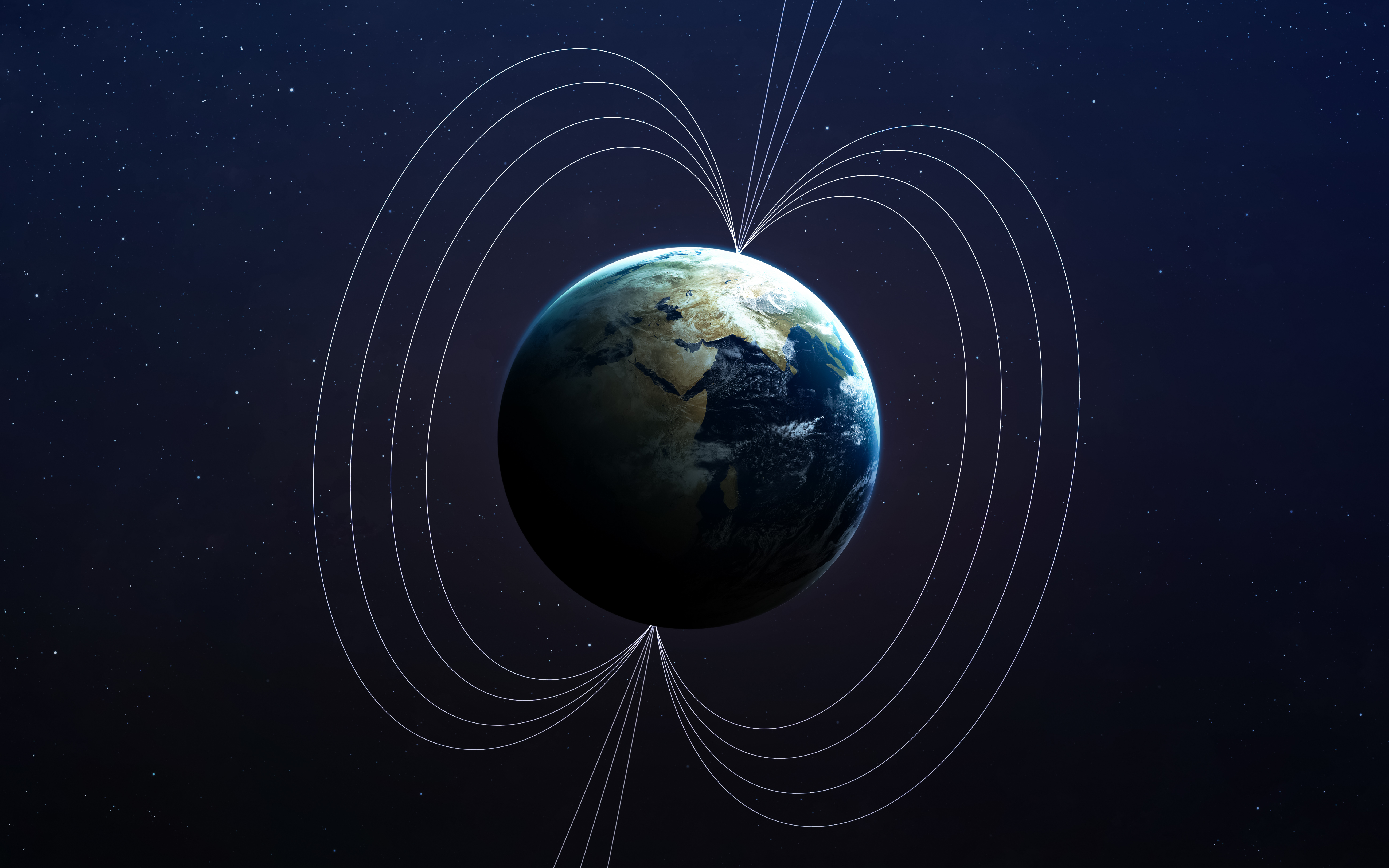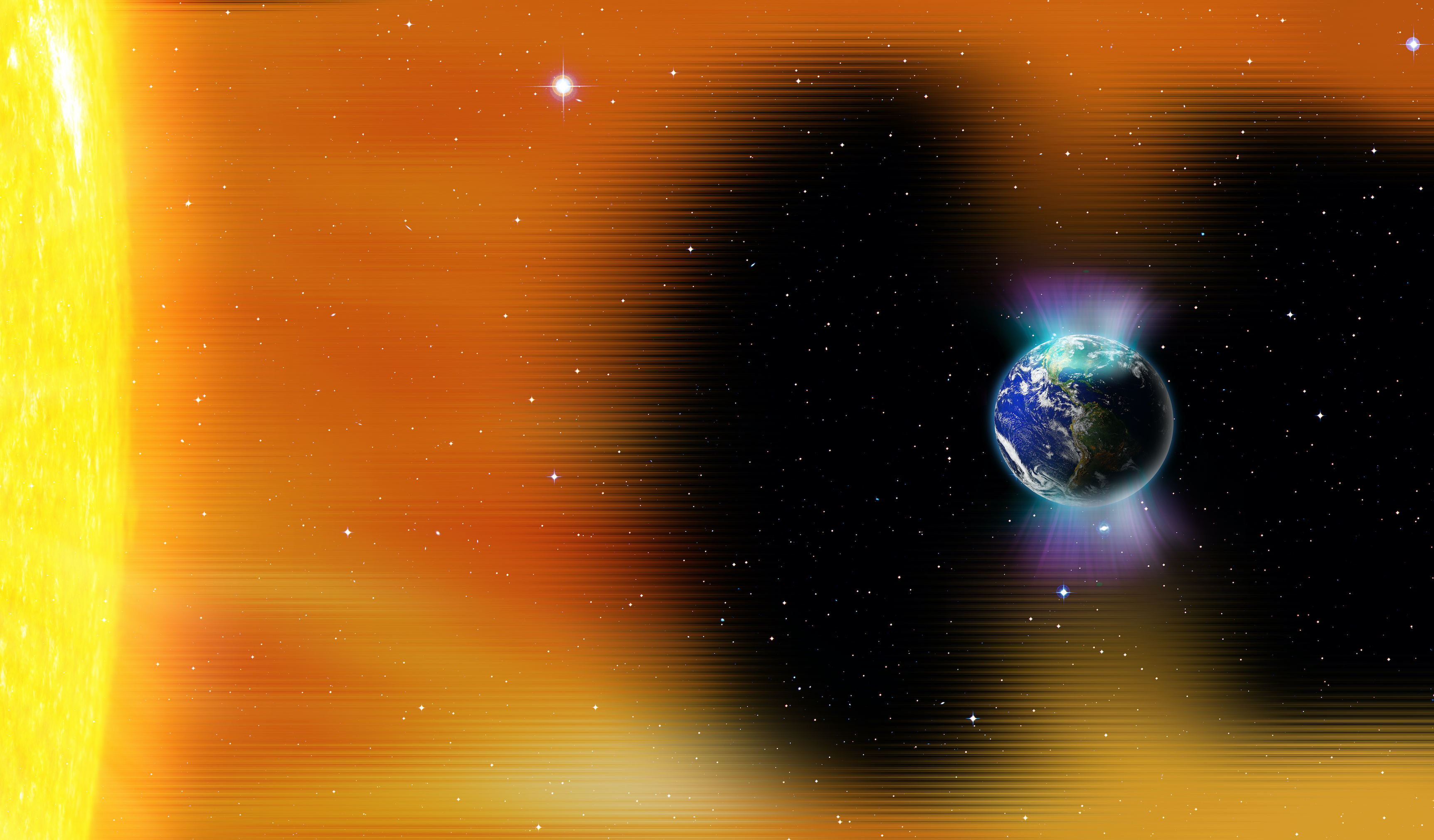My own involvement in astrophysics started when I was a PhD student. My thesis topic was the interaction of turbulence with magnetic fields. That involves both the Navier–Stokes equations and Maxwell’s equations for the electromagnetic field, and the very strong interaction between these topics in electrically conducting fluids. When you have currents flowing in these fluids, magnetic fields result, and the interaction of currents and magnetic fields affect the fluid motion. So, it becomes a very complex interaction. My own involvement has been primarily in the field known as dynamo theory, explaining the origin of magnetic fields and the way they evolve in planets, stars and even galaxies.
Stars, planets and galaxies
Emeritus Professor of Mathematical Physics
- My thesis topic was the interaction of turbulence with magnetic fields. That involves both the Navier–Stokes equations and Maxwell’s equations for the electromagnetic field, and the very strong interaction between these topics in electrically conducting fluids.
- A bootstrap effect, or a magnetic instability, gives rise to the generation of the magnetic field of the Earth.
- Without the magnetic field of the Earth, we would be subject to extremely harmful radiation. It’s doubtful whether any of us could survive that radiation.
A complex interaction

Photo by Vadim Sadovski
The dynamo theory
If I take the Earth as a particular case, the outer core of the Earth is liquid. It consists of liquid metal, an ally of iron and nickel, and it’s in a very complex state of motion. This is due to convection from the solid inner core, the slow solidification process that goes on at the boundary, and convection currents being strongly influenced by the rotation of the Earth – the Coriolis effect – in this liquid core.
This gives rise to whatever describes a form of helical turbulence. Turbulence with this property of helicity, which we now understand in dynamo theory, leads to a very famous effect known as the “alpha effect”. It’s a bootstrap effect whereby motion across the magnetic field gives rise to a current. This current, already understood by Faraday, gives rise to a magnetic field which can reinforce the magnetic field that you start from; so, in that sense, a bootstrap effect or a magnetic instability. That gives rise to the generation of the magnetic field of the Earth.
We’re very confident about that mechanism as the origin of the Earth’s magnetic field. Of course, we can’t go down to that deep core. All we have is measurements of the magnetic field here on the surface or further out into space, but we know how it evolves and how it changes with time.
Outside the Earth
When you go out to stars like the sun, the situation is very different, from a physical point of view. You’re dealing with an ionised gas and the convection zone of the sun – a very turbulent convection, but again, influenced by the rotation of the sun. So, there is the same Coriolis effect and the same generation of an alpha effect.
It’s more complicated, but on the other hand, we have much more detailed information about the solar magnetic field from satellite observations. We have a similar theory for the evolution of the solar magnetic field, which varies on a 22-year cycle. It’s periodic in time, unlike the Earth’s magnetic field, which is much more steady.
The galaxy is a self-gravitating system that is also rotating. There’s a strong degree of what we call “differential rotation” in the galaxy. Again, the same ingredients – rotation, fluid medium and a degree of convective motion – all interacting to provide what amounts to an alpha effect responsible, we believe, for the generation of the galactic magnetic field.
The importance of magnetic field generation

Photo by muratart
We’re interested in the magnetic field for a number of reasons. In the case of the Earth, it gives us information. We measure the magnetic field variations here on the surface of the Earth and, by extrapolating downwards, we can infer the state of motion in the liquid interior. That gives us a huge amount of information that we couldn’t derive by any other direct measurement.
Understanding this magnetic or magnetohydrodynamic process is a very valuable tool in geophysics. Equally, in solar physics, we have to understand the manner in which a magnetic field can erupt from the solar surface. These eruptions are observed very frequently. They’re capable of causing electromagnetic disturbances on the Earth. Fortunately, we’re protected by the Earth’s magnetic field, from radiation emanating from the sun. Without the Earth’s magnetic field, we’d be in very serious trouble as a result of that radiation. For all these reasons, we have to understand magnetic field generation.
Getting closer to understanding black holes?
There is a constant interaction between theoreticians and observational astronomers in the context of black holes and galactic magnetic fields. I was involved with Donald Lynden-Bell in trying to explain the jets that are observed emanating from accretion disks, which leads to the formation of black holes. That is an area, again, where observation stimulates theory, and theoretical work analysis, usually of the equations of magnetohydrodynamics, stimulates renewed observation. It’s very much an interactive process.
An interaction between mathematics and physics
We are very much on the border between mathematics and physics in this area, and physicists are equally involved, although we usually think of physics as being concerned with what goes on at the quantum level or in circumstances where quantum effects become important.
Fluid dynamics, on the other hand, is concerned with classical effects and other effects where the fluid is treated as a continuum. That turns out to have very wide practical applications in this astronomical context. It’s very much a to and fro interaction. In this case, the mathematicians and the observationalists really work side by side. Papers that are published in one area immediately stimulate activity in the other area. It’s very much a two-way process.
Protecting us from harm

Photo by Efman
Without the magnetic field of the Earth, we would be subject to extremely harmful radiation. It’s doubtful whether any of us could survive that radiation. So, there’s a very fundamental reason for understanding why we have this magnetic field, why it does protect us in this way, and how it can be potentially disrupted by extreme events erupting from the sun.
These extreme events could damage the electronic communication that we all depend on so much nowadays. So, that is a matter that is of great concern. It’s potentially a very serious risk to the whole global community, because this would be a global disaster.
Understanding magnetohydrodynamics is very relevant to the problem of energy production for the future. One area is fusion physics, the development of a fusion energy such as the current tokamak experiment in Cadarache, France. It’s a huge development that involves magnetic fields in the plasma contained inside a tortoise. The hope is to generate sufficiently high temperature and controlled conditions to generate more energy than is put into the system, in a sustainable way.
Discover more about
magnetic field generation
Moffatt, H. K. & Dormy, E. (2019). Self-Exciting Fluid Dynamos. Cambridge University Press.
Lynden-Bell, D. & Moffatt, H. K. (2015). Flashpoint. Mon. Not. R. Astron. Soc., 452(1), 902–909.
Moffatt, H. K. (1972). An approach to a dynamic theory of dynamo action in a rotating conducting fluid. J. Fluid Mech, 53(2), 385–399.